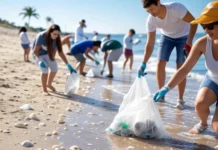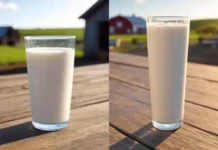World Seagrass Day, celebrated every year on March 1st, is a global observance designed to raise awareness about the importance of seagrasses in maintaining healthy marine ecosystems. Seagrasses, which are flowering plants found in shallow coastal waters worldwide, play a crucial role in supporting biodiversity, improving water quality, and combating climate change. Despite their importance, these underwater meadows are rapidly declining due to human activity, making it vital for communities around the world to take action for their conservation. In this article, we’ll explore why seagrasses matter, the threats they face, and how we can contribute to preserving these vital ecosystems.
Key Details
| Event | World Seagrass Day |
|---|---|
| Date | March 1st annually |
| Established by | United Nations General Assembly in 2022 |
| Purpose | Raise awareness about seagrass conservation and its benefits |
| Key Benefits of Seagrasses | Supports marine biodiversity, improves water quality, stores carbon |
| Challenges Faced | Coastal development, pollution, climate change, overfishing |
| Global Importance | Protects vulnerable ecosystems, mitigates climate change impacts |
The Importance of Seagrass Meadows
Seagrasses are marine flowering plants found in shallow waters across the globe, from the tropics to the Arctic Circle. These plants form underwater meadows that support a variety of marine life, from small fish to large sea turtles. Despite covering just 0.1% of the ocean floor, seagrasses provide habitats for thousands of species and are essential for the health of the world’s oceans. Here are some key reasons why seagrasses are vital:
1. Biodiversity Support
Seagrass meadows act as critical habitats for marine life. They provide food and shelter for thousands of species, including commercially important fish, seahorses, and endangered species like sea turtles and dugongs. Many marine animals rely on seagrass meadows as nurseries where they can grow and develop safely.
2. Climate Change Mitigation
Seagrasses are efficient carbon sinks, storing up to 18% of the ocean’s carbon, making them one of the most effective tools in combating climate change. They absorb and store carbon from the atmosphere, helping reduce the effects of global warming. Seagrasses also buffer ocean acidification, which threatens coral reefs and marine organisms.
3. Water Quality Improvement
Seagrasses help improve water quality by filtering and cycling nutrients and pollutants. This natural filtration system reduces the contamination of seafood and helps maintain the overall health of marine environments. They also stabilize sediment in coastal waters, reducing water turbidity.
4. Coastal Protection
Seagrass meadows act as a natural barrier, reducing wave energy and protecting coastlines from erosion. By absorbing wave energy, they help protect coastal communities from the increasing risk of floods and storms, which are becoming more common due to climate change.
The Threats to Seagrasses
While seagrasses are essential for ocean health, they are under threat from a range of human activities. These include:
- Coastal Development: Urbanization and construction along coastlines often lead to the destruction of seagrass habitats.
- Pollution: Land-based runoff containing chemicals, nutrients, and plastics harms seagrasses and disrupts their growth.
- Climate Change: Rising sea temperatures, ocean acidification, and coastal flooding all contribute to the degradation of seagrass meadows.
- Unregulated Fishing & Boating: Anchors, trawling, and other fishing activities can physically damage seagrass meadows.
Despite these challenges, efforts are underway to restore and protect seagrass meadows. Through conservation initiatives, local actions, and global awareness, there is hope that seagrass habitats can recover and thrive once again.
Why We Celebrate World Seagrass Day
World Seagrass Day was established by the United Nations General Assembly to bring attention to the vital role of seagrasses in marine ecosystems. The day aims to:
- Raise Awareness: Educate people worldwide about the importance of seagrasses for biodiversity, water quality, and climate change mitigation.
- Promote Conservation: Encourage action to protect, conserve, and restore seagrass meadows.
- Drive Policy Change: Advocate for the inclusion of seagrass conservation in global climate agreements and marine conservation strategies.
By celebrating World Seagrass Day, we can inspire communities, governments, and organizations to work together to preserve seagrasses for future generations.
Suggested Hashtags
- #WorldSeagrassDay
- #SavingSeagrass
- #BlueTransformation
- #ProtectOurOceans
- #SeagrassConservation
- #MarineBiodiversity
- #SustainableOceans
What are seagrasses?
Seagrasses are flowering plants that grow in shallow coastal waters. They form underwater meadows that provide food, shelter, and breeding grounds for many marine species.
Why are seagrasses important?
Seagrasses support marine biodiversity, improve water quality, sequester carbon, and protect coastlines from erosion. They are vital for maintaining healthy oceans and combating climate change.
What threats do seagrasses face?
Seagrasses are threatened by coastal development, pollution, climate change, and unregulated fishing. These factors lead to habitat loss and degradation of seagrass meadows.
How can we help conserve seagrasses?
We can help by reducing pollution, supporting seagrass restoration projects, promoting sustainable fishing practices, and advocating for the protection of seagrass habitats through policy changes.
When is World Seagrass Day celebrated?
World Seagrass Day is celebrated annually on March 1st to raise awareness about the importance of seagrasses and their role in marine ecosystems.

























